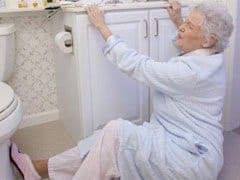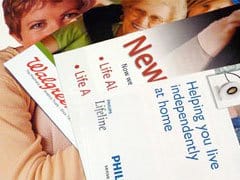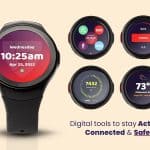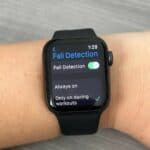What’s the Best Medical Alert?
Review & Compare Features of Top Brands
- Medical Guardian vs Bay Alarm
- Life Alert vs Lifeline
- Medical Alert vs LifeFone
Reviews
In-depth reviews of medical alert providers, devices and systems. Our Star Rating System ranks Life Alert, Medical Guardian, LifeStation, Philips & more.
Compare
Choose the medical alert systems you want to compare & view them instantly side-by-side. Compare Life Alert, LifeStation, Lifeline, Alert1, ADT, & more!
Fall Detection
When a senior or loved one falls, they may be unable to press their medical alert button to call for help. This is where Automatic Fall Detection can help.
Buyer’s Guide
Our 3-part medical alert system buyer’s guide walks you through everything you need to know to research, buy & set-up your medical alert system.

Starting at $19.95 Per Month!
Free Shipping Options
Free Lockbox (Annual Plans)
1-877-624-5160
DISCLOSURE: We may receive referral fees for inquiries.
Understanding Medical Alert Systems For Senior Care
Although various types of home security systems have been around since the dawn of time, the history of medical alert devices only goes back about four decades. Medical alert systems have been around since 1972, helping the elderly get personal emergency response when they are not able to get to their telephones. A psychology professor named Dr. Dibner is known for patenting the first medical alert pendant. And just like that, people were able to get help with a push of a button. In addition to giving patient caretakers peace of mind, medical alert devices can be life-saving in a medical crisis.
These types of response systems have progressed a long way since the 1970’s and have increased reliability. Technology advances have allowed medical alert devices to evolve to current home security and medical monitoring needs. The manufacturers have medical alert systems with extra options such as fitness trackers, motion sensors, automatic fall detection and GPS medical tracking, to name a few. Medical alert devices have several names such as PERS (personal emergency response system) and MERS (medical emergency response system).
With numerous medical alert devices and plans to choose from, finding the best option can feel daunting. MedicalAlertAdvice.com was created to help you learn and decide what type of medical alert system your loved one will need, and choose which option best suits your specific needs. In our medical alert comparison chart, we break down which medical alert systems providers offer services such as GPS medical alerts, automatic fall notifications, and so on. You can also compare the customer service availability and details such as long-term contracts, pricing tiers, equipment fees, and cancellation fees.
These are all important pieces of information to complete your search for the perfect medical alert device. Also, remember to plan ahead and search for unique features that not only your friend or loved one needs now, but what they’ll need down the road as well. For example, those who suffer from low blood pressure and are prone to fainting would benefit from the automatic fall detection add-on. Next, we will review the many different types of medical alert systems in detail.
Traditional Medical Alert Pendant Systems
Traditional Medical Alert Systems are usually the first thing you think of when you hear the words “Help! I’ve fallen, and I can’t get up.” These systems are very popular and affordable. They usually come with a pendant that is worn at all times and allows your loved one to call for immediate help. There are many different types of wearable devices such as a watch style or alert bracelet, clip-on attachment to your clothing, or a pendant necklace. You can choose your personal preference on how you’d like to wear the help button, although the most popular option seems to be the pendant necklace. Please be aware, these medical alarm systems typically require you to have an active landline telephone which isn’t as common in today’s households.
The traditional medical alert system comes with a two-way console that connects to a monitoring center. The system has sensitive microphones and loudspeakers that will help you communicate if an accident occurs. After you push the button on your device, it sends a signal to the call center which will have all of your family contact information readily available. The call specialists will act as they see fit if no specific patient instructions have been given, such as calling your loved ones or dispatching 911, depending on what’s happening. The call center workers are trained in personal emergency response and will stay on the line with your loved one until help arrives.
When shopping around for these devices, check the range of the signal to the base unit to be sure it suits your needs. We also suggest that you don’t sign a long-term contract as your needs may change in the future and you don’t want to waste your hard-earned money. Make sure to review the fine print and understand the cancellation process. Another consideration is if the alert system provider operates its own monitoring center, and if they adhere to UL certification and TMA Five Diamond standards. Geriatric care can be challenging, but knowing that your loved one has direct access to help on their person at all times can help to alleviate stress. They can also help your aging loved one age in place longer.
GSM and CDMA Cellular-Based Medical Alert Systems
GSM stands for Global System Mobile Communications and CDMA stands for Code Division Multiple Access. These are two major service providers, AT&T (GSM) and Verizon (CDMA) which are used to carry signals across their wireless 4G and 5G LTE cellular networks. These types of cellular based medical alert systems are great options if your home doesn’t have a traditional landline connection. Since they operate on the same cellular network as your cell phone, they offer connection and protection anywhere there is a cell signal. Similar to the traditional medical alert system, when the emergency medical device is triggered, a signal is sent to the call center. The alert system connects and links to the base unit wirelessly. The pendant may also be worn a number of ways. For instance, you can wear it as a medical alert bracelet, necklace or some are available as a smartwatch.
The wearable aid is usually waterproof which offers additional protection in the case of slips and falls in the shower or tub. They also have long-lasting lithium or rechargeable batteries, so it’s always ready to use. Once the alert is activated, an expertly trained response center representative will connect with you through the speaker inside your unit. The rep will work with you to call your loved ones who they already have on file or contact 911 if needed. If you’re unable to respond, emergency assistance will be called immediately. The dispatcher will also stay on the line until help arrives providing comfort in your time of need.
Mobile and GPS Cellular Medical Alert Systems
Many medical alert companies have mobile-based medical alert systems that provide protection while you’re away from your home. Some systems even have GPS (Global Positioning Satellite) location services built right in. These systems are a top pick among consumers for their flexibility and range as these mobile versions can be used outside of one’s home. How these systems work depends on the options that are available to you. Basically, while you’re in your backyard garden or out at the local grocery store, you can press the button on your portable device and the operator will be able to pinpoint your location, so they can send help your way. Some systems also allow you to speak to the operator right through the mobile device itself, just like a home-based unit, and can provide automatic fall notifications as well.
These mobile devices are smaller than a smartphone but also require charging the battery, unlike a traditional medical alert pendant would. The key is finding the right one for your aging loved one. We suggest starting with Medical Alert Advice’s handy comparison chart. Compare side-by-side features such as alert range, pricing options, rechargeable battery life, response times and carbon monoxide protection. You can also compare the monthly fees and additional one-time fees for equipment and cancellation. So, whether your loved one lives in senior housing, assisted living, or at home, a cellular based medical alert system with GPS is a great medical alert option for them.
Fall Detection Systems
One of the most popular features of medical alert devices is automatic fall detection. With an estimated one-in-four seniors falling each year, it’s no wonder why fall detection is popular. Falls are also the leading cause of fatalities and trauma for seniors over the age of 65, and a quick response is essential. According to the Centers for Disease Control (CDC), each year, 3 million older people are treated in emergency departments for fall injuries.
Alert systems that offer automatic fall detection normally have the technology built into the user’s alert pendant. The processors are smart enough to sense the differences between normal everyday activity and an actual fall. When an automatic fall detection system senses that a user has fallen, it will give the user a short period of time to respond before alerting medical assistance. It can even detect falls as little as two feet which means if you fall off your couch or chair, it will sense it and get you the necessary help. It’s important to point out that these sensors do not notice sliding movement so for that reason, they’re not 100% accurate.
Having the alert button on the pendant which the user can press in addition to the automatic sensors is important. The benefit of having automatic fall notifications for your aging loved one is the speed of reaction in case of an incident and they’re unable to press the alert button themselves. This is lifesaving in most situations. A diabetic who suffers from low blood pressure and is prone to falls or a person susceptible to heart attacks are just a few types of people who can benefit. Having this safety device can bring tremendous peace of mind to their loved ones.
There are several things to consider when purchasing this type of device. If slipping in the bath or shower is a concern, having a device that is waterproof is the best option. You also want a pendant that alerts you when the battery is low and is comfortable to wear throughout the day. We recommend testing the system often to be sure it is working properly. Remember, there are extra fees associated with adding automatic fall detection to your in-home medical alert system. You can easily compare the various pricing options and return policies right here on our website. We also recommend comparing any discounts, promo, or bundles that different companies offer. You can usually get free shipping for your devices or a free trial period.
Wellness Monitoring
Wellness monitoring is a newer addition to the medical alert system market. This is a well-rounded, 24/7 emergency response system with a set of equipment that allows caregivers to monitor a number of actions that attribute to the wellbeing of your loved ones. Wellness systems come with equipment such as motion sensors and sensors on your doors and bed. They have stationary emergency buttons as well as wearable devices in addition to water detectors and other security video devices. All of these sensors work together to provide a picture of your overall wellness and health.
Wellness monitors get to know your routine such as when you go to the bathroom, your sleep cycles, activity levels, and so on. When there is a disruption in that routine, it will alert caretakers that you may be unwell or even might have fallen. For instance, if your bed has been empty for a long period of time on a given night, it’s likely that you got out of bed and have fallen while walking and did not wear your pendant at night, or you could be unconscious. If your trips to the bathroom have increased, perhaps you need to talk to your primary doctor. Some wellness sensors can even detect when you’ve missed a dose of medication.
This type of overall health and safety supervision allows caregiver services to provide you with advanced customized health care. Imagine you have a loved one with dementia who often forgets to wear their pendant. This system is a great safety net for traditional medical alert devices, in this situation. Door sensors will protect them from wandering late at night and bed sensors can help detect nighttime falls which are fairly common among senior citizens. Your caregiver can easily log into your wellness dashboard on their computer or mobile device app to view reporting of your daily activity and even your behaviors, such as wake-up times and kitchen visits.
These wellness systems help facilitate elderly adult independence and extra reassurance. They also have a battery backup so you don’t need to worry if there’s a power outage. It provides overnight support for caretaker services which is an excellent resource for home-care facilities and senior living facilities.
Medication Dispensing and Pill Management
Medication reminders and alarms can help your elderly loved ones remain independent in their home longer. With many seniors prescribed at least one type of medicine, it’s important to have proper pill management. Spacing out pills is key to avoiding potentially dangerous drug side effects. These add-on systems are available options from some of the medical alert system providers we review on this site. These systems can help with the management of complex medical prescription schedules. In most cases, the system will provide an audible reminder through the base station of your personal medical response system for when the medication is due. There is also a dispenser machine option. When the unit sounds, you would simply press the dispenser button and the exact dose of medication will be dispensed.
These systems are simple to use and help avoid double dosing and missing important prescriptions. They also come with a lock and key that can be managed by the caregiver which prevents accidental tampering. Many seniors can benefit from the use of an automatic hands-free pill dispenser including those who are diagnosed with dementia, have tremors, arthritis, or even vision problems. The dispenser has volume settings, so it can be set to an extremely loud buzz for those who are hard of hearing as well as flashing lights.
Please note that many of these systems require a home phone line although a few systems have come out in recent years that include a 4G or 5G LTE cellular option. These more advanced systems provide caregivers with notifications and reports, so they can be informed of any missed doses, etc. Keep this in mind when researching the best system for you.
Smoke and Carbon Monoxide (CO) Detection Monitored Systems
According to the National Fire Protection Association (NFPA), senior citizens are twice as likely to be injured in a fire in their homes. This makes it vital to have working smoke alarms in your home. The recommendation is to have at least one on each level of your home in addition to every bedroom and outside the sleeping area too. Since battery life can be an issue, set a reminder to test the batteries on all your life safety and security systems at least twice a year and completely replace the detectors after ten years.
Carbon monoxide (CO) has been described as a silent killer because it has no order, smell, or taste. CO detectors should be considered for anyone with an attached garage, fireplace, or a gas hookup in the home. However, Medical Alert Advice suggests that all seniors (at a minimum) have at least one in their home, preferably outside of your sleeping area. Depending on the layout of your home, you may need several devices in your home, but no less than one per floor.
How it works is that they measure CO levels over time and will sound an alarm when dangerous levels of CO are detected in the home. If monitored through your medical alert provider, they will alert you, your family, and emergency services immediately. Check with your in-home medical alert provider to see if they offer smoke and CO systems as part of their overall systems. Dual systems may also be available to provide both smoke and CO alarms. Carbon monoxide systems have a limited sensor life and should be replaced approximately every 5 years or when the sensor has notified you. Some wireless systems can provide additional protection for those who are visually or hearing impaired. The product can vibrate your pillow or set off strobe lights as an additional warning to get you out of the house when the level has risen to a dangerous or deadly point.
Remember, the smoke and CO alert systems purchased from your local home center are not monitored through your medical alert system and will only sound a local alarm to notify you of a fire or high levels of carbon monoxide. If you would like your medical alert device to include professional monitoring services for these life-saving devices, you must purchase the optional product through them.
Telemedicine and Smart Home Technologies
The medical alert system landscape seems to change on a daily basis. With new home care technologies continually coming out, there are even more reasons to let your loved one age in place longer. There are now systems that can control everything in your home such as turning on and off lights, setting security alarms, locking the doors, and adjusting thermostats, all with a click of a button. Telemedicine is one of the recent extensions of the medical alert monitoring industry. In-home tests can provide blood pressure monitoring, blood glucose levels and much more to your caregiver or medical health professional, who can act accordingly depending on the results. Imagine having your physician or doctor be able to respond immediately to incoming health reports. It could be potentially life-saving.
In-Home Care for Seniors
There are four different categories of caregiving:
- Personal Care – help with hygiene
- Emotional Care – companionship
- Household Care – cooking & cleaning
- Medical Care – physical therapy & medication management
In-home care services for seniors can range from 24/7 live-in caregiving to part-time caregiving. These services can include grocery shopping, driving to appointments, home cleaning, and running errands. In some cases, just having the companionship of a caregiver can help seniors suffering from loneliness. With the help of so much of the new medical alert technology, a lot of seniors are choosing part-time caregiving and saving on caregiving costs. Whichever type of caregiving your loved one needs, combining it with a medical alert system will give you comfort and increased confidence that they are being fully taken care of.
There are several qualities to look for when finding an in-home caregiver for your loved one. Compassion and patience are key qualities for any caregiver to have. You also want to find someone with geriatrics experience and expertise in whatever area your loved one needs help with, such as dementia care or diabetes management. Make sure the potential candidate has all of the needed education and certifications to care for your loved one. In addition to the obvious qualities, you want to be sure the two personalities mesh well together. Communication is key for a happy, healthy caregiving environment. Allowing your loved one to age in place with the help of an in-home caregiver can provide comfort and familiarity for years to come.
FAQs
Q: How much will this cost?
A: Prices vary between providers and depend on what type of system you choose. You could potentially pay as little as $20 per month for basic monitoring, or upwards of $50 per month. There is usually a basic plan that starts at around $30 per month and includes the device and setup costs.
Q: Will I be locked into a contract?
A: Just like the start-up costs, the contract requirements vary from brand to brand. Most options do not require you to sign a binding contract, but you can usually get a discount when you make quarterly or yearly payments. A few options require that you sign a one-year commitment, but they will make that clear before you sign up.
Q: Do I need a traditional landline?
A: The answer to this question is no, and is not even an option with a Mobile GPS model. Like many home security systems, some existing systems require an old fashioned telephone for it to work and stay connected. There are a few systems that work with an Internet-based voice over IP telephone services, and a few that work with a cell phone plan provided by the medical alert company. Most medical alert reviews and ratings give traditional landlines a big thumbs down. However, companies are developing brand new cellular-based LTE systems and wireless GPS and WIFI alert devices that you can use anywhere you go.
Q: Are medical alert systems covered by Medicare?
A: It’s common for older adults and their loved ones to search for what’s exactly covered through their Medicare or Medicare plan. Currently, Medicare (Parts A and B) do not reimburse for expenses related to medical alert devices. Some Medicare Advantage benefits could offset the cost of medical alert systems, but you would need to check with your plan administrator.
Q: Are medical alert systems eligible for my HSA plan?
A: Health savings accounts (HSA) are increasingly popular among older adults, but they can still be a source of confusion in regards to knowing what’s covered and not covered. The medical alert devices cost is likely covered under your HSA plan, but you will need to contact your plan administrator directly to double check that the brand you want is covered.
Q: Are the monitors based in America?
A: Most of them are. A U.S. based monitoring service can make a big difference, especially when it comes to crisis situations where language barriers can delay treatment or intervention. Operators speak English, Spanish, and use a third party-translation system, if needed, for other languages.






